Young people in agriculture and rural areas

Young people play the critical role in the future of Europe's agricultural sector and rural communities
Young farmers are the backbone of the future agricultural sector. Their involvement is crucial for ensuring food security, sustainability, and innovation in farming. Unlike older generations, they are more open to adopting new technologies, such as precision farming and AI-driven solutions, which can boost efficiency and reduce environmental impact. Moreover, young farmers bring fresh energy and a long-term vision, essential for maintaining the economic viability of rural communities. Without their participation, agriculture risks stagnation, leading to rural depopulation and increased reliance on food imports. Supporting young farmers isn’t just about preserving tradition—it’s about securing a resilient and forward-thinking agricultural system.
The Importance of Young People in Agriculture and Rural Areas
Agriculture's Role: Agriculture is central to Europe's economy and rural areas. For these regions to thrive in the future, the involvement of young people is vital. Their contributions are essential in tackling major challenges such as climate change, rural depopulation, and the economic viability of farming.
EU's Commitment: The European Union is dedicated to supporting young people through targeted funding, training programs, and initiatives aimed at fostering innovation and generational renewal in rural areas.
Current Situation of Young People in Agriculture
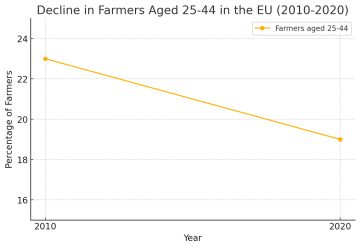
Young Farmers: The EU’s Common Agricultural Policy (CAP) plays a key role in supporting young farmers. The CAP is focused on generational renewal and includes measures to empower young farmers and help them establish sustainable businesses.
Despite the efforts, young farmers (under 40) manage only 12% of farm holdings in the EU, with only 3% being female farmers. The share of farmers in the 25-44 age group has declined, showing a decrease from 23% in 2010 to 19% in 2020. This trend underscores the need for more young farmers to be supported and involved in agriculture.
The EU's goal is to facilitate the setup of 377,000 young farmers through CAP support, helping them create commercially viable enterprises and contribute to rural sustainability.
Challenges Facing Young People in Rural Areas
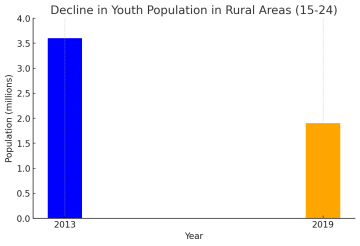
Declining Youth Population in Rural Areas: The proportion of young people in rural areas is decreasing. Data from Eurostat shows that between 2013 and 2019, the number of young people aged 15-24 in rural areas dropped significantly, from 3.6 million to 1.9 million.
Research on Rural Youth: The European Commission and Council of Europe are conducting research to better understand the challenges faced by young people in rural areas. This research is particularly focused on those aged 18-30 and aims to improve conditions for rural youth. The findings of this study are expected to be published in 2025.
Ageing Rural Regions
Population Trends: Rural regions are aging faster than urban areas. Between 2019 and 2022, the number of people over 65 in rural regions increased, while the younger population decreased. This demographic shift is partly due to lower natural growth and net migration, further exacerbating the challenge of maintaining a vibrant rural population.
The Need for Youthful Involvement: As rural areas age, the younger working-age population continues to shrink, underscoring the necessity of involving young people in rural development to ensure long-term sustainability.
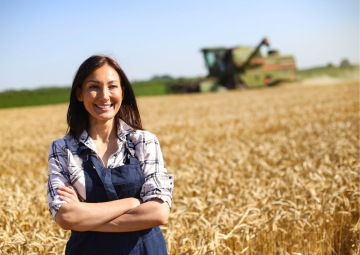
Source: GoodLifeStudio / Getty Images via Canva
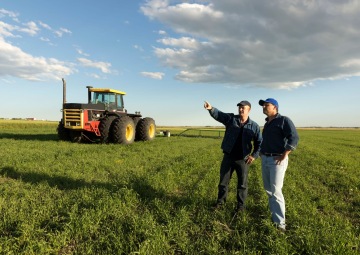
Source: shotbydave / Getty Images via Canva
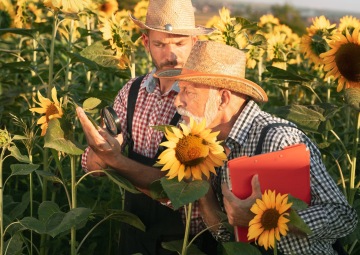
Source: CherriesJD / Getty Images via Canva
Gender Gaps and NEETs*
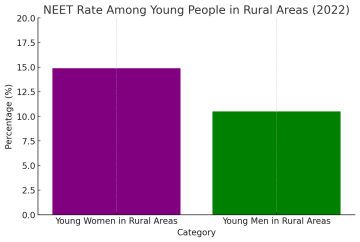
Gender Disparities: Rural areas have a higher share of NEETs* (young people not in education, employment, or training) compared to urban areas. In 2022, 14.9% of young women in rural areas were NEETs, compared to 10.5% of young men. This indicates a gender gap that needs to be addressed to ensure equal opportunities for young people in these regions.
*NEET (Not in Education, Employment, or Training) - young people not in education, employment, or training
EU Initiatives for Youth Engagement
The Rural Pact: A part of the EU's long-term vision for rural areas, the Rural Pact is a platform aimed at fostering exchange and cooperation among rural stakeholders and citizens. Young people are encouraged to join the Youth in Rural Areas - Empowering the Next Generation community group, which aims to provide a space for them to engage, share ideas, and collaborate on rural development projects.
EU's Rural Vision: The European Commission's report from March 2024 highlighted progress made since 2021 in rural regions but also pointed out the challenges, such as the aging population and the need to address the gender gap and the NEET rate.

Source: 8213erika / Getty Images via Canva

Source: fauxels / Pexels via Canva

Source: VanderWolf-Images, Getty Images via Canva
The Future of Rural Youth
Vision for Rural Areas by 2040: EU’s long-term vision for rural areas outlines strategies and objectives to help young people stay and thrive in rural communities. It stresses that improving conditions for young people is critical to reversing the demographic decline and ensuring economic growth in rural areas.
This article is based on data from the European Commission, which highlights the role of young people in agriculture and rural development. For more details, you can refer to the original source: Young People in Agriculture and Rural Areas – European Commission.






